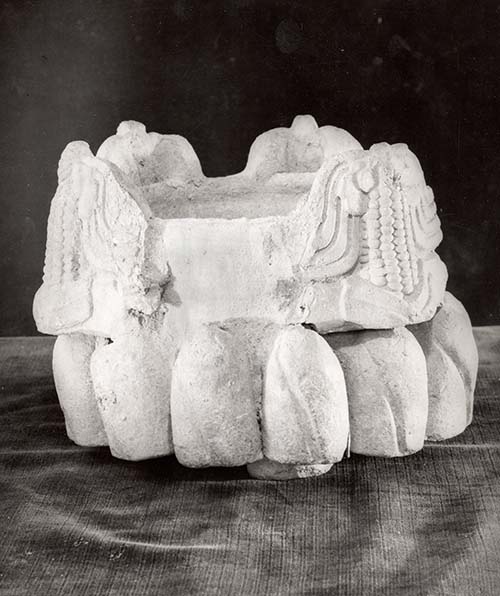Seemingly countless metates have been discovered throughout the Americas, but they are not the only evidence of a maize-dependent society. Proto-Mayan vocabulary included words for grinding corn, a ripe ear of maize, maize flour, tortilla, maize beverages, and other aspects of the maize production process, as well as terms for parts of the plant itself. The importance of maize is also visible in the iconography of many societies, displayed, for example, on ceramic and stone objects.

Ceramic Maize Funerary Urn, Monte Alban, Oaxaca, Mexico
The vessel pictured above and the fragment of a funerary urn featured in the Maize in Mesoamerica section, both from Zapotec sites in Oaxaca, Mexico, are artifacts from the M.A.R.I. collections.
Chicomecoatl (“Seven Serpent”) is depicted with her paper headdress, was the Aztec goddess of ripe maize and female partner of Centeotl, the male god of maize in Aztec mythology.
Mesoamerican people relied on maize to fulfill both their physical and religious needs. The Maize God is a central figure in Mesoamerican mythology, as a figure of rebirth.
The funerary rituals of the Maya are possibly based on this important god. In one myth, the Maize God’s sons, known as the Hero Twins, resurrect their father using water, sunlight, and the Maize God’s jade suit. Thus, the Maize God’s transformations are a metaphor for the cyclical growth pattern of the staple crop of the Maya and for the cycle of life.